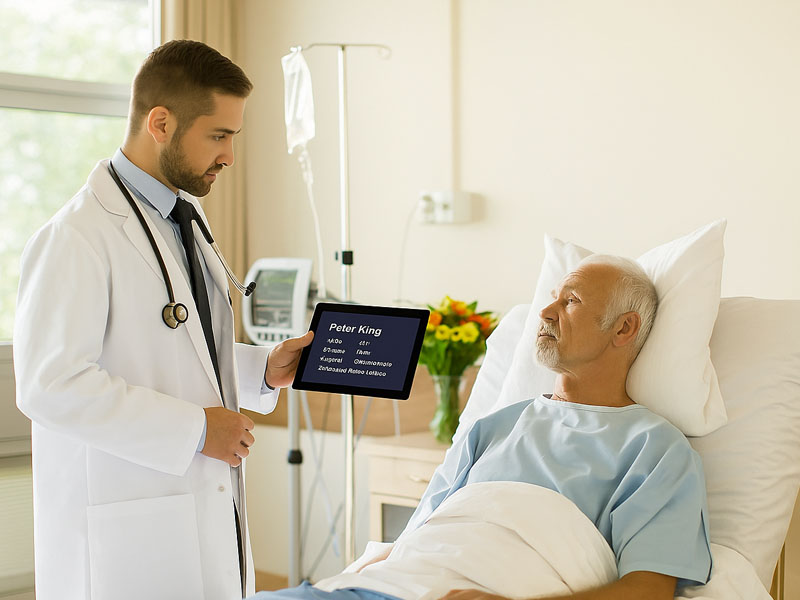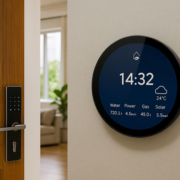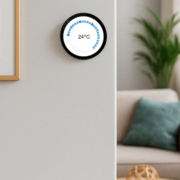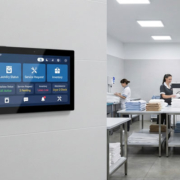Real-Time Connectivity: Building the Smart Hospital Ecosystem
The future of healthcare is increasingly reliant on technology, and real-time connectivity lies at the heart of building a Smart Hospital Ecosystem. With the rapid advancements in the Internet of Things (IoT), cloud computing, and artificial intelligence, hospitals and healthcare facilities are transforming into more intelligent, connected environments that enable seamless communication, real-time monitoring, and optimized patient care. The key to achieving this transformation is integrating smart systems that not only improve the efficiency of healthcare operations but also enhance patient experience and outcomes.
The Role of Real-Time Connectivity in Smart Hospitals
Real-time connectivity refers to the ability of devices and systems to transmit data instantaneously, without delays, across various components within a healthcare facility. This technology allows medical teams to monitor patient health, manage critical equipment, track hospital resources, and communicate instantly—no matter where they are within the facility.
For a Smart Hospital Ecosystem to function effectively, a seamless network of interconnected devices and systems must be established. Here’s where Portworld comes into play, providing cutting-edge solutions tailored for smart hospitals and healthcare providers worldwide.
Key Components of a Smart Hospital Ecosystem
Connected Patient Monitoring Systems
In a smart hospital, patient health metrics—such as heart rate, blood pressure, oxygen saturation, and temperature—are continuously monitored using connected devices. Real-time data from these devices can be sent to healthcare providers’ terminals, providing them with critical insights into patient health.
Portworld’s Smart Care Panels are an excellent example of a solution that integrates with these monitoring systems, offering healthcare providers instant access to the latest data. With customizable features and a sleek, user-friendly interface, these smart panels allow medical professionals to track patient vitals, adjust room settings, and communicate with patients—all from a single screen. The Portworld YC-SM08P and YC-SM55P smart panels provide flexible, real-time control for healthcare facilities, ensuring that staff can make timely decisions based on the most up-to-date information.
Integrated Electronic Health Records (EHR)
Electronic Health Records (EHR) systems are central to the functioning of a smart hospital. These systems store and manage patient data digitally, eliminating the need for paper records and enabling instant access to medical history, prescriptions, and other critical information.
Portworld’s solutions, such as the YC-SM10P, offer seamless integration with EHR systems. This allows healthcare providers to access patient records, review lab results, and update treatment plans, all through one interface. By linking the Smart Care Panels with hospital databases and EHRs, Portworld facilitates real-time updates of patient data, ensuring that all healthcare providers are on the same page when it comes to patient care.
Smart Hospital Infrastructure Management
A key aspect of creating a smart hospital is managing the building’s infrastructure efficiently. This includes controlling lighting, temperature, HVAC systems, and even security systems from a central interface.
Portworld’s Smart Panels, such as the YC-SM08M or YC-SM08P, can be used to control hospital room settings in real time. Whether it’s adjusting the lighting for patient comfort or ensuring optimal temperature settings in surgical rooms, these panels provide centralized control over environmental factors. Additionally, their PoE (Power over Ethernet) capability ensures that devices can function without the need for separate power cables, simplifying installation and reducing clutter.
Remote Healthcare and Telemedicine
Telemedicine and remote healthcare services are becoming increasingly important in modern hospitals, especially in areas where patient access to care may be limited. Real-time connectivity allows healthcare providers to monitor patients remotely and deliver healthcare services even when they are not physically present.
With Portworld’s real-time connectivity solutions, healthcare providers can engage in telemedicine services through integrated smart panels. Devices like the YC-SM08M can enable patients to have video consultations with specialists, receive remote monitoring, and manage their medical needs from the comfort of their own homes.
Moreover, Portworld’s custom solutions for OEM/ODM can be tailored to meet the specific needs of telemedicine applications. Whether it’s creating specialized interfaces for video consultations or integrating remote monitoring systems, Portworld provides the flexibility and expertise needed to ensure seamless real-time healthcare delivery.

smart hospital
Patient Engagement and Communication
In a smart hospital, patient engagement and communication are critical to improving the patient experience. Real-time connectivity enables two-way communication between healthcare providers and patients, ensuring patients can always stay informed about their health, treatment plans, and discharge processes.
Portworld’s Smart Panels help facilitate this communication by providing an easy-to-use interface for patients to interact with hospital staff. Patients can make requests, control their room environment, and even check on the status of their treatment through the interactive touch panel. These panels serve as a communication hub, ensuring that patients feel more involved in their own care while helping hospital staff manage patient needs efficiently.
Resource Tracking and Asset Management
Hospitals are busy environments with thousands of devices and assets in use at any given moment. From medical equipment to hospital beds and wheelchairs, tracking and managing these resources is crucial to maintaining an efficient operation.
Real-time connectivity allows smart hospital systems to track assets using technologies like RFID (Radio Frequency Identification) and IoT sensors. Hospitals can know the exact location of every device and asset in real time, reducing the risk of loss or theft.
Portworld’s embedded solutions, such as the P6802 RK3568 Mainboard, can be integrated with hospital resource management systems, enabling real-time tracking and data reporting of hospital assets. This integration ensures that healthcare facilities can optimize their resource allocation and improve overall operational efficiency.
Benefits of Real-Time Connectivity in Smart Hospitals
- Improved Patient Outcomes: With real-time data monitoring, medical professionals can make quick decisions, leading to better patient care and improved outcomes.
- Enhanced Efficiency: Real-time connectivity eliminates delays in communication, streamlining workflows and improving the overall efficiency of healthcare teams.
- Cost Savings: By improving resource management and reducing errors, real-time connectivity helps hospitals cut costs while maintaining high-quality care.
- Increased Patient Satisfaction: A hospital that offers real-time updates, efficient communication, and more personalized care will see a significant improvement in patient satisfaction.
Portworld: Empowering the Smart Hospital Ecosystem
Portworld stands at the forefront of the Smart Hospital Ecosystem, offering a wide range of OEM/ODM solutions tailored to meet the demands of healthcare facilities. With products like the YC-SM10P, YC-SM55P, and P6802 RK3568, Portworld provides hospitals with the real-time connectivity they need to streamline operations, enhance patient care, and improve overall efficiency.
By leveraging Portworld’s advanced technology and customizable solutions, healthcare providers can integrate smart panels, real-time monitoring systems, and telemedicine capabilities into their existing infrastructure—creating a truly connected, intelligent healthcare environment.
Real-time connectivity is transforming the way hospitals operate, offering the ability to monitor patient health, control hospital systems, and communicate efficiently, all in real-time. By building a Smart Hospital Ecosystem, healthcare providers can improve patient outcomes, enhance operational efficiency, and elevate the overall patient experience.






